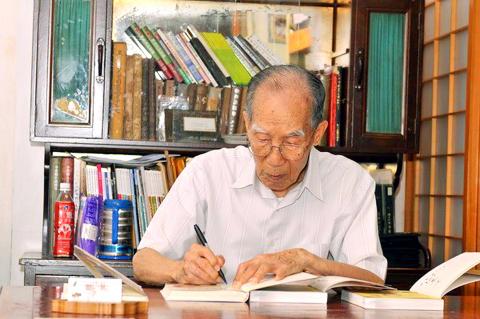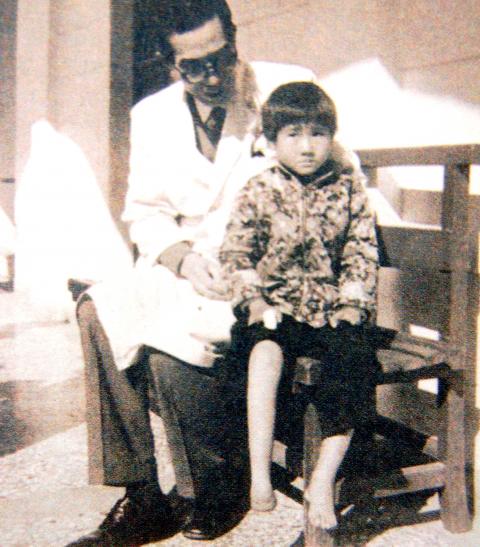Taiwan in Time: March. 7 to March. 13
As Tainan County councilor Wang King-ho (王金河) walked out of jail after 23 days for being accused of corruption by a political enemy, he decided to leave the factionalized world of politics.
“Although I was acquitted, I saw how treacherous politics could be and I was disillusioned,” Wang writes in A Memoir: Father of the Blackfoot Disease, Wang King-ho (烏腳病之父王金河回憶錄). “It was a wake up call.”

Photo courtesy of the Ministry of Culture
As a politician-doctor, Wang wrote that patients from other political factions wouldn’t come to see him, and he was straying from his goal of treating all residents of his hometown of Beimen (北門).
Returning home to practice in 1944 after the area’s only licensed physician died, Wang was first elected mayor of Beimen in 1945, and after serving two terms, he became a county councilor.
It’s a good thing Wang made his decision, because in 1956, about a year after he finished his final term as councilor, people started coming down with a strange disease on the coast of southern Chiayi and northern Tainan counties — and Beimen was right in the center of it.

Photo: Wang Han-ping, Taipei Times
‘BLACK DRY SNAKE’
Locals called it “black dry snake” (烏乾蛇), though it’s known today as blackfoot disease. Symptoms typically began with numbness or coldness in the feet, progressing to painful gangrene as lack of circulation resulted in black, dead tissue. “Snake” referred to the way it would slowly spread up the limbs. The afflicted were usually in such severe pain that they couldn’t eat properly, and the rotting flesh often became infested with maggots. Even after amputating the limb, the gangrene could still return.
If the physical suffering — which often drove patients to bang their heads against the wall — wasn’t bad enough, Wang writes that because even relatives would keep a distance from or even shun the afflicted since they didn’t know whether it was contagious or not, even believing that it was a sort of curse for past bad deeds. Isolated and unable to work, many committed suicide.
“Their lives were a living hell with no way out,” Wang said. Since he was also the forensic pathologist, he said it especially saddened him when he examined the suicide victims.
“I swore to do all I could for my people and for blackfoot disease patients,” he said.
POISONING
The cause was later determined to be arsenic poisoning from drinking deep well water. Curiously, this type of gangrene has only been reported in Taiwan. Aside from a scare in Yilan in the 1990s, it was essentially eradicated as households started switching to tap water in the 1960s and 1970s.
At first, Wang didn’t have adequate supplies to treat the patients, and was only able to ease the pain and refer them to larger hospitals — but many were too poor to go. Soon, he was joined by researchers from National Taiwan University, who set up six free beds and provided affordable artificial limbs.
In April 1960, Lillian Dickson, a missionary who previously worked with lepers and Aborigines suffering from lung disease, arrived in Beimen. With her Mustard Seed organization, Dickson set up the Pak-mng (Beimen’s Hoklo — commonly known as Taiwanese — pronunciation) Mercy’s Door Free Clinic (北門免費診所) for blackfoot patients and asked Wang, also a Christian, if he could provide a small space in his clinic and be the main physician.
Dickson started out renting a house next to the clinic that could house six patients, but by 1966, her organization owned a two-story structure that could house 50 to 60 patients. She also provided milk and vitamins to patients and children, and helped transport children whose families could no longer provide for them to orphanages in Taipei.
Wang and his wife Mao Pi-mei (毛碧梅) were known for taking care of blackfoot patients, even personally making coffins for those without family and had young men from the church perform the funeral procession. When there weren’t enough men, nurses from the clinic helped carry the coffins.
“People were afraid to help at first, but soon everyone joined in,” he said. “This was the happiest time of my life, my golden years.”
As amputees often became beggars, Wang and Mao set up a handicraft training center for patients and later added a handicraft factory, which was run by Mao.
GOOD DEEDS
For their deeds, Wang and Mao are often referred to as “father and mother of blackfoot disease patients.”
During this time, Wang crossed paths with Hsieh Wei (謝緯), a pastor and physician who was known for his voluntary medical work with remote Aboriginal tribes. Hsieh ran the Christian hospital in Puli (埔里), Nantou County and also set up a tuberculosis sanatorium there.
Despite his regular duties, for 10 years, Hsieh would make the 300km round trip journey to Beimen every Thursday to help Wang with the amputations at no cost.
Hsieh would later relocate to Changhua, where he cared for the destitute patients there and opened a polio clinic. He would later be known as the Albert Schweitzer of Taiwan.
Wang said that he and Hsieh shared the same philosophy of being a “fool.”
“If there aren’t fools in the world, there wouldn’t be peace,” Wang recalled Hsieh saying in a sermon.
“The greatest fools in the world are parents — they take care of their children no matter how rebellious they are … Nowadays, all doctors in Taiwan want to make a lot of money and buy expensive houses and cars. But who is willing to save the patients who don’t have money? Well, I’ll be a fool if it can bring some warmth to this society.”
Wang passed away on March 13, 2014 at the age of 97.
Taiwan in Time, a column about Taiwan’s history that is published every Sunday, spotlights important or interesting events around the nation that have anniversaries this week.

Many people noticed the flood of pro-China propaganda across a number of venues in recent weeks that looks like a coordinated assault on US Taiwan policy. It does look like an effort intended to influence the US before the meeting between US President Donald Trump and Chinese dictator Xi Jinping (習近平) over the weekend. Jennifer Kavanagh’s piece in the New York Times in September appears to be the opening strike of the current campaign. She followed up last week in the Lowy Interpreter, blaming the US for causing the PRC to escalate in the Philippines and Taiwan, saying that as

US President Donald Trump may have hoped for an impromptu talk with his old friend Kim Jong-un during a recent trip to Asia, but analysts say the increasingly emboldened North Korean despot had few good reasons to join the photo-op. Trump sent repeated overtures to Kim during his barnstorming tour of Asia, saying he was “100 percent” open to a meeting and even bucking decades of US policy by conceding that North Korea was “sort of a nuclear power.” But Pyongyang kept mum on the invitation, instead firing off missiles and sending its foreign minister to Russia and Belarus, with whom it

The Chinese Communist Party (CCP) has a dystopian, radical and dangerous conception of itself. Few are aware of this very fundamental difference between how they view power and how the rest of the world does. Even those of us who have lived in China sometimes fall back into the trap of viewing it through the lens of the power relationships common throughout the rest of the world, instead of understanding the CCP as it conceives of itself. Broadly speaking, the concepts of the people, race, culture, civilization, nation, government and religion are separate, though often overlapping and intertwined. A government

Nov. 3 to Nov. 9 In 1925, 18-year-old Huang Chin-chuan (黃金川) penned the following words: “When will the day of women’s equal rights arrive, so that my talents won’t drift away in the eastern stream?” These were the closing lines to her poem “Female Student” (女學生), which expressed her unwillingness to be confined to traditional female roles and her desire to study and explore the world. Born to a wealthy family on Nov. 5, 1907, Huang was able to study in Japan — a rare privilege for women in her time — and even made a name for herself in the